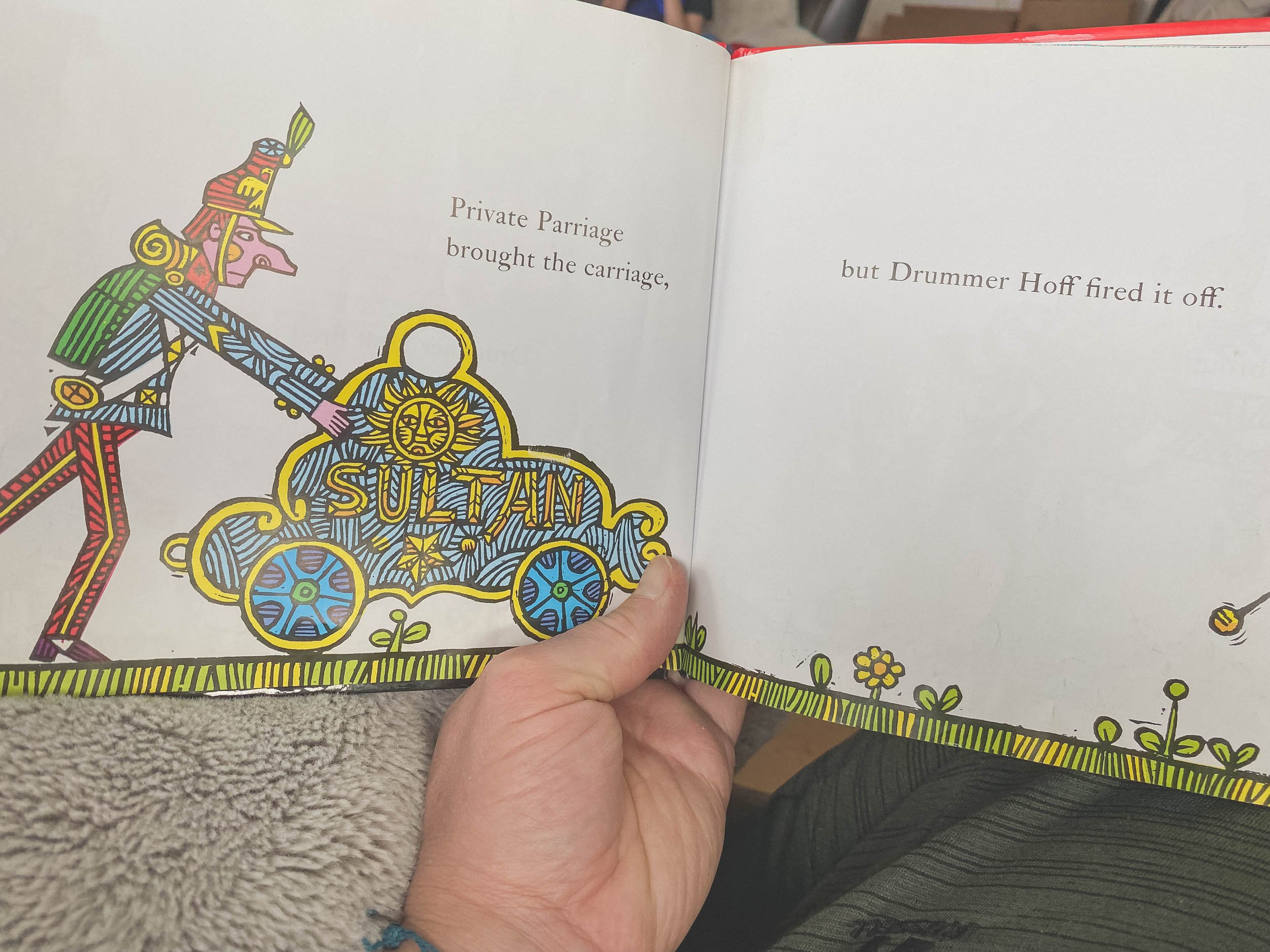Caldecott Books : “Saint George and the Dragon” (1985)
Saint George and the Dragon (1984)
retold by Margaret Hodges
illustrated by Trina Schart Hyman
The concerns of yesterday and today and tomorrow
When I was a kid, my Mom would take me to the library once a week. I’d load up with a box of books. I’d gobble them up, and return the next week with the box ready to exchange for new ones. My Mom went through phases of trying to map out readings in different areas, with the intent and hope that I not get immersed too deep in one or two genres. She would write out a list with subheadings for various categories, and the number of books for me to check out of each. Science, history, biography, nature, religious, literature, art, poetry, fiction…this latter category was the one she was most concerned about me falling in love with. Fiction.
One of the things I love about my mom is her growth mentality. She can laugh about that now. I laugh about it too - but in a positive and healthy manner. I am grateful that she took the time to not only take us to the library regularly (it was a 30-minute drive each way), but to try and engage and direct the scope of what I’d read; to provide a Renaissance outlook in absorbing knowledge and stories.
Fiction. That was possibly the part of greater concern. A hope that I would not trip down the slippery slope of make-believe stories and…tune out real life? Something like that. I’m not even sure she could articulate why now, except that from a cultural perspective at that time, and in the community we were in, it was a valid concern. In every decade and generation, there are some parental concerns that are recurring and others that are a product of their time. I’m not sure where a concern with your child becoming too engaged with fiction comes from, in terms of that category. Is it more of a timeless concern, or one more contained to certain eras?
Concerns I remember from being an ‘80s kids: Halloween candy being poisoned, stranger abductions, the Pope taking over the world, Madonna being a bad influence.
Alea acta est.
In spite of my mom’s concern over fiction at large (not too many Hardy Boys! Not too much Weird Al or Beach Boys listening!), the die had already been cast. I loved stories, and somehow, early on in the libraries, I got a copy of Margaret Hodges’ St. George and the Dragon, illustrated in baroque detail by Trina Schart Hyman. I fell in love. I read and reread this timeless tale of a hero going against a villain; this was no antihero or shaded version of morality, this was binary Good versus Evil. A hero, a villain, a battle for the soul and survival of a village. It had everything, except, perhaps nuance. It was and is the best kind of picture book (or story of any type): the kind that demands to be read and read and re-read and pored through. Not just the text, but the illustrations. A masterful rendition of a timeless tale.
Was my mom right to be concerned about my reading choices? Perhaps, though I think overall her level of concern was appropriate: she didn’t stop or prevent me…
…she still enabled and encouraged my access to books, providing some guidance and shepherding and guardrails of sorts.
It was this kind of access that led me to a lifelong love of books, of reading, of stories, and of examining the ways great stories are told in words and pictures. This is a wonderful example of a way in which text and illustration co-exist in a manner that strengthens one another. It’s not an “easy read” when compared to many other picture books. It’s text-heavy - actually, it’s page-heavy: every flip reveals another saturated rectangle of content in visuals and narrative that are asking to be savored. Challenging? Yes. It’s not a skim-through. Or rather…it can be at a certain point: you know the story, you can race through when you feel like it and absorb the detailed rendering of George and his sword going up against the beast.
Christopher Nolan needs to do this as a film. Flesh out the world, the relational dynamics, and the nuance that’s lurking. But if not…that’s okay too. Not every book needs to become a movie or limited series.











